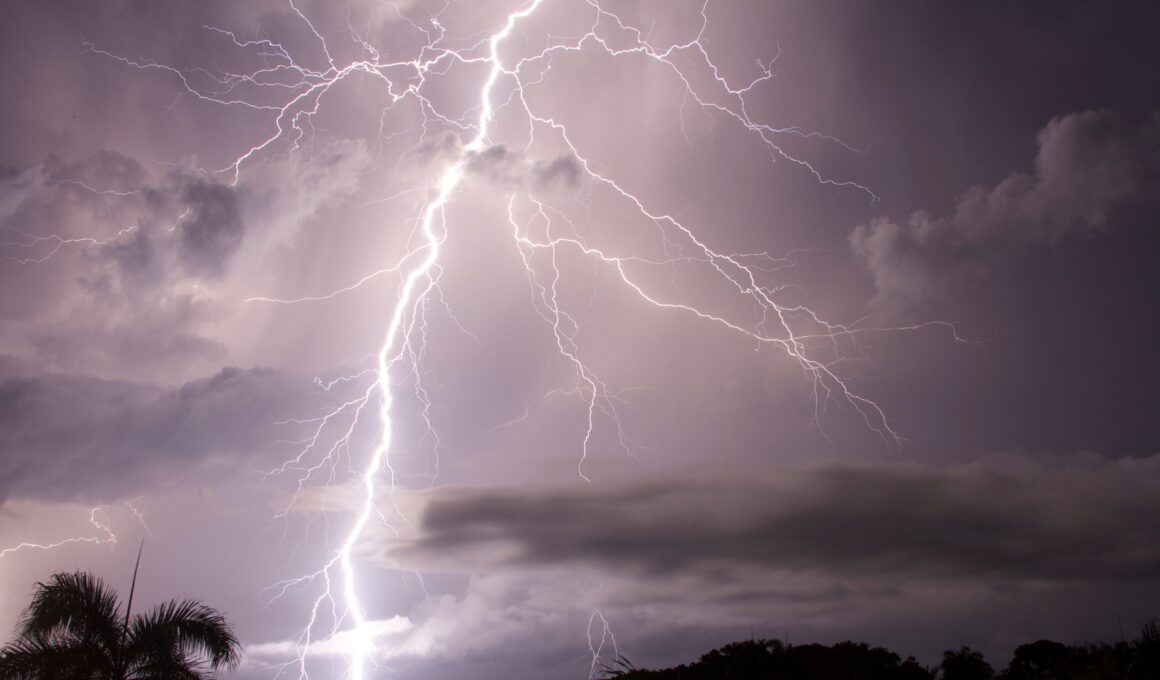Astraphobia is the fear of thunder and lightning, and is also known as astrapophobia, brontophobia, tonitrophobia or keraunophobia. It is one of the few phobias that is observable in both humans and animals, and is fortunately a treatable phobia. Here we will look at what precisely astraphobia is, and how it is best treated.
Did you know? The term astraphobia comes from the word ‘astra’ meaning ‘weapon’. This is because of the mythical demigod ‘Indra’ who used thunder and lightning as a weapon to bring fear to the planet Earth. Those with astraphobia may find this origin particularly fitting.
What Is Astraphobia?
Astraphobia is a fear of thunder and lightning that goes beyond the ‘normal’ fear of what can understandably be frightening displays of the power of nature. In astraphobia the phobia will interfere with the individual’s ability to continue with their normal activities and will prevent them from living a full and normal life – certainly during the thunderstorms at least.
The symptoms of astraphobia vary widely but generally are based around feelings of anxiousness which coincide with thunder and lightning. Someone who has astraphobia will find that during thunderstorms they tend experience the following:
- Anxiousness
- Racing thoughts
- Rapid breathing and heartbeat
- Potential panic attack
- Trembling
- Crying
- Sweating
- Feelings of dread
- Desire to find shelter/comfort
Often the individual will attempt to smother the sound of the thunder and may attempt to seek shelter under bed clothes or in cupboards etc. Of course they would likely refuse to go outside during a thunderstorm, and this could then get in the way of their usual activities. In order to be defined as astraphobia, the reaction must be proportionate to the level of actual risk.
Treatment
There are several treatment options available for people with astraphobia which can help them to overcome their fears and to continue with their usual activities. Here we will look at those most common forms of treatment and how they work to help you find the best treatment for you.
Desensitization
Desensitization is a treatment that can be used for a variety of different phobias and which comes from the behaviorism school of psychology. Essentially this school of psychology looks at the role of associations, and how forming negative associations can cause certain stimuli to have negative effects. For instance in the case of astraphobia, it would be proposed that you once had a scary encounter during a thunderstorm as a child, or that you had associated the storm with the unpleasant noise and the fear that causes.
Thus it is proposed that similarly you could develop more positive associations so that you had positive thoughts, feelings and emotions when faced with a thunderstorm. To achieve this you would simply need to be exposed to thunderstorms regularly enough at the same time as having a good experience so that in your mind the thunderstorm and the good experience become linked. Similarly you can remove the old association by constantly being exposed to the thunderstorm with nothing bad happening to you.
To go through desensitization then would normally involve being subjected to thunderstorms or simulations where you would become closer and closer to the center and they would become louder and louder. Each time you experienced this you would be encouraged by the therapist and might be given a treat such as a chocolate. At the same time you might be taught some relaxation techniques in order to help you calm your heart rate etc in the presence of the stimuli. Over time you would eventually create new associations so that your body recognized that thunderstorms are nothing to be afraid of and so that you managed to stay calm in the face of this kind of weather.
Cognitive Behavioral Therapy
Cognitive behavioral therapy or CBT adds an extra component to the basic behaviorist model of human behaviors – a cognitive aspect that looks at the contents of our thoughts and how these affect our behaviors and emotions. Basically then it is proposed here that one of the contributors to a phobia such as astraphobia is the thoughts that an individual has such as ‘it’s going to hit my house’ or ‘it’s so loud’ or ‘it’s right on top of us’. In cognitive behavioral therapy you are taught to identify these negative thoughts that are causing or worsening the phobia and then to eliminate or to replace them with more positive ruminations – such as ‘it’s a long way away’ or ‘the chances of getting struck by lightning are so minimal as to be of no concern’. CBT also similarly teaches coping methods such as meditation and breathing exercises, and may use ‘biofeedback’ in order to get patients to monitor and control their own heart rates to bring them to more acceptable levels.
Medication
Finally some individuals may choose to use medication such as anti-anxiety drugs in order to treat the symptoms of their astraphobia as and when they occur. This is something that can be effective in bringing the symptoms under control, but it is important to remember that they also have side effects and can be expensive. Becoming dependent on anti-anxiety drugs is not recommended, and meanwhile these will not address the cause of the condition and so it will still reoccur without some form of therapy. However due to the relatively rare occurrence of lightning and thunder, this may be something that you can use – and it is certainly the method of choice for pets.





How is the phobia caused?